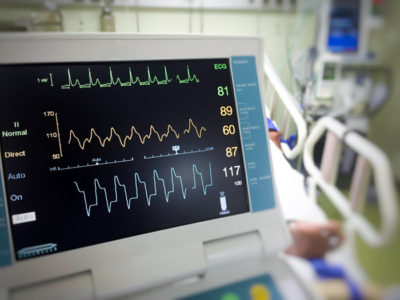If you are the one out of 20 Americans over the age of 50 who have PAD (peripheral artery disease), your doctor has probably already told you that if left untreated, your PAD puts you at greater risk of heart attack and stroke.
PAD is a common but dangerous medical condition where a buildup of plaque (fatty deposits and cholesterol) makes it difficult for blood to circulate through the arteries. PAD most commonly affects the legs but can also damage arteries in the kidneys, abdomen, feet, ankles, pelvis, hips, buttocks and arms.

How Does a Heart Attack Happen?
The most common cause of a heart attack is the sudden narrowing or blockage of a coronary artery, which blocks oxygen from getting to the heart. This can happen when plaque in the coronary artery breaks and a blood clot forms in the artery.
Over time, plaque may narrow the artery and the artery hardens (atherosclerosis). This condition is called coronary artery disease.
While symptoms vary, the most common heart attack symptoms include tightness or pain in the chest, neck, back, or arms, as well as fatigue, lightheadedness, abnormal heartbeat, and anxiety. Women are more likely to have atypical symptoms than men.
How Does a Stroke Happen?
There are two types of stroke:
- Ischemic stroke is similar to a heart attack, except it occurs in the blood vessels of the brain. Clots can form in the brain’s blood vessels, in blood vessels leading to the brain, or even in blood vessels elsewhere in the body and then travel to the brain. These clots block blood flow to the brain’s cells. Ischemic stroke can also occur when too much plaque clogs the brain’s blood vessels. About 80% of all strokes are ischemic.
- Hemorrhagic strokes occur when a blood vessel in the brain breaks or ruptures. The result is blood seeping into the brain tissue, causing damage to brain cells. The most common causes of hemorrhagic stroke are high blood pressure and brain aneurysms. An aneurysm is a weakness or thinness in the blood vessel wall.
The most common symptoms of a stroke are weakness or numbness of the face, arm, or leg on one side of the body. Some people also experience loss of vision, loss of speech, difficulty talking, loss of balance and sudden, severe headache.
Lifestyle Changes for People with PAD
Many people can manage the symptoms of PAD and stop the progression of the disease through lifestyle changes, especially quitting smoking. To stabilize or improve PAD:
- Stop smoking. Smoking contributes to constriction and damage of your arteries and is a significant risk factor for the development and worsening of PAD.
- Exercise. Success in treatment of PAD is often measured by how far you can walk without pain. Proper exercise helps condition your muscles to use oxygen more efficiently. Your doctor can help you develop an appropriate exercise plan.
- Eat a healthy diet. A heart-healthy diet low in saturated fat can help control your blood pressure and cholesterol levels, which contribute to PAD.
See a vascular specialist like Dr. Russell Lam of Lam Vascular and Associates. In more serious cases, a vascular specialist may recommend peripheral artery bypass surgery or a minimally-invasive vascular procedure such as angioplasty and stenting or laser atherectomy.
The information contained in this article is not intended to be used as a substitute for medical advice. Patient results will vary based on risk factors, age, disease and medical history and are not guaranteed in any way.

